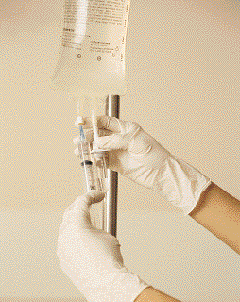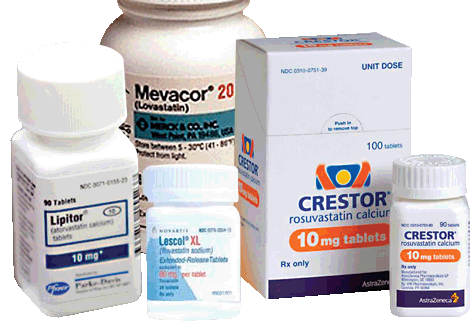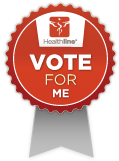I thought I'd share my regulatory notes for the BCPS Exam 2013. There were quite a bit of regulatory questions last year. You know the type, "What does the whatever committee for whatever ensure?" Um, 'scuse me?
We should know by now what The Joint Commission is. Organized in the 1950's, it meshes with the Medicare Act in the 1960's. In other words, to be eligible for Medicare/Medicaid, you must be accredited by TJC. In the late 1980's, TJC shifted its focus to actual performance. An independent, not-for-profit organization, The Joint Commission accredits and certifies more than 20,000 health care organizations and programs in the United States. Joint Commission accreditation and certification is recognized nationwide as a symbol of quality that reflects an organization’s commitment to meeting certain performance standards.
National Committee for Quality Assurance (1990) - how health plans are regulated and accreditation of health plans. The National Committee for Quality Assurance is a private, 501(c)(3) not-for-profit organization dedicated to improving health care quality. Since its founding in 1990, NCQA has been a central figure in driving improvement throughout the health care system, helping to elevate the issue of health care quality to the top of the national agenda.
- Healthcare Effectiveness and Data Information Set (HEDIS) - HEDIS® (The Healthcare Effectiveness Data and Information Set) is the gold standard in health care performance measurement, used by more than 90 percent of the nation's health plans and many leading employers and regulators. HEDIS is a set of standardized measures that specifies how organizations collect, audit and report performance information across the most pressing clinical areas, as well as important dimensions of customer satisfaction and patient experience.
National Quality Forum (NQF) -
The National Quality Forum (NQF) is a nonprofit, nonpartisan, public service organization committed to this transformation.
NQF reviews, endorses, and recommends use of standardized healthcare performance measures. Performance measures, also called quality measures, are essential tools used to evaluate how well healthcare services are being delivered. NQF's endorsed measures are often invisible at the clinical bedside but quietly influence the care delivered to millions of patients every day. Measures:
- Make our healthcare system more information rich
- Point to actions physicians, other clinicians, and organizations can take to make healthcare safe and equitable
- Enhance transparency in healthcare
- Ensure accountability of healthcare providers
- Generate data that helps consumers make informed choices about their care
Working with members and the public, NQF also helps define our national healthcare improvement 'to-do' list, and encourages action and collaboration to accomplish quality improvement goals.
Institute of Medicine's "To Err Is Human" - 44,000-98,000 people die each year as a result of human error. Systems vs. Individuals. November 1999 - a good pdf to read.
Institute of Medicine's "Crossing the Quality Chasm" - This report from the committee on the Quality of Health Care in America makes an urgent call for fundamental change to close the quality gap, recommends a redesign of the American health care system, and provides overarching principles for specific direction for policymakers, health care leaders, clinicians, regulators, purchasers, and others.
Core Measures - These are the Core Measures sets. Core Measures found within this link.
Core Measure Sets
Medicare Prescription Drug, Improvement and Modernization Act - Consumer driven healthcare. Pay for reporting. Hospital Inpatient Quality Reporting Program.
Center for Medicare and Medicaid Services (CMS) - partners with TJC for creation of hospital quality measures. http://www.qualitynet.org
TJC announces Shared Visions - New Pathway - The Shared Visions-New Pathways initiative was developed to bridge a gap that has been identified between the current state of health care and care that is safer and of higher quality.[3]The medication management standards that resulted from these efforts were implemented in January 2004 along with the Shared Visions-New Pathways initiative.
Hospital Consumer Assessment of Healthcare Providers and Systems - HCAHPS - assessment of quality of care from a patient's perspective.
Pharmacy Quality Alliance To improve the quality of medication management and use across healthcare settings with the goal of improving patients’ health through a collaborative process to develop and implement performance measures and recognize examples of exceptional pharmacy quality.
Electronic Health Record (EHR) Incentive program - provides financial incentives for the "meaningful use" of certified EHR technology to improve patient care. Meaningful Use = Incentives
Patient Protection and Affordable Care Act - (Obamacare) (Affordable Care Act) The ACA aims to increase the quality and affordability of health insurance, lower the uninsured rate by expanding public and private insurance coverage, and reduce the costs of healthcare for individuals and the government. It provides a number of mechanisms—including mandates, subsidies, and insurance exchanges—to increase coverage and affordability. The law also requires insurance companies to cover all applicants within new minimum standards and offer the same rates regardless of pre-existing conditions or sex. Additional reforms aim to reduce costs and improve healthcare outcomes by shifting the system towards quality over quantity through increased competition, regulation, and incentives to streamline the delivery of healthcare. The Congressional Budget Office projected that the ACA will lower both future deficits and Medicare spending.
Quality Metrics - Quality Net - Established by CMS - improvement news, resources, data reporting Tools
Specifications Manual for National Hospital Inpatient Quality Measures - The Specifications Manual for National Hospital Inpatient Quality Measures includes the measure sets: AMI, HF, PN, SCIP, CAC, VTE and STK.
The aligned manual represents the result of efforts by the Centers for Medicare & Medicaid Services and the Joint Commission to achieve identity among common national hospital performance measures and to share a single set of common documentation.
HCHPS Survey - 32 questions of random sample of patients 48 hours to 6 weeks after discharge, not just medicare. Data online lags about 12-18 months on the internet.
Hospital Acquired Conditions defined by CMS:
- Foreign Object Retained After Surgery
- Air Embolism
- Blood Incompatibility
- Stage III and IV Pressure Ulcers
- Falls and Trauma
- Fractures
- Dislocations
- Intracranial Injuries
- Crushing Injuries
- Burn
- Other Injuries
- Manifestations of Poor Glycemic Control
- Diabetic Ketoacidosis
- Nonketotic Hyperosmolar Coma
- Hypoglycemic Coma
- Secondary Diabetes with Ketoacidosis
- Secondary Diabetes with Hyperosmolarity
- Catheter-Associated Urinary Tract Infection (UTI)
- Vascular Catheter-Associated Infection
- Surgical Site Infection, Mediastinitis, Following Coronary Artery Bypass Graft (CABG):
- Surgical Site Infection Following Bariatric Surgery for Obesity
- Laparoscopic Gastric Bypass
- Gastroenterostomy
- Laparoscopic Gastric Restrictive Surgery
- Surgical Site Infection Following Certain Orthopedic Procedures
- Spine
- Neck
- Shoulder
- Elbow
- Surgical Site Infection Following Cardiac Implantable Electronic Device (CIED)
- Deep Vein Thrombosis (DVT)/Pulmonary Embolism (PE) Following Certain Orthopedic Procedures:
- Total Knee Replacement
- Hip Replacement
- Iatrogenic Pneumothorax with Venous Catheterization
Claims-Based Measures -
For the quality of care measure sets listed below, CMS uses Medicare enrollment data and Part A and Part B claims data submitted by hospitals for Medicare fee-for-service patients. (Hospitals are not required to submit additional data for the claims-based measures.)
Medicare Hospital Inpatient Value-Based Purchasing Benchmark - 95th percentile -
The HVBP program is designed to promote better clinical outcomes for hospital patients, as well as improve their experience of care during hospital stays. Specifically, Hospital VBP seeks to encourage hospitals to improve the quality and safety of care that Medicare beneficiaries and all patients receive during acute-care inpatient stays by:
- eliminating or reducing the occurrence of adverse events (healthcare errors resulting in patient harm)
- adopting evidence-based care standards and protocols that result in the best outcomes for the most patients
- re-engineering hospital processes that improve patients’ experience of care
Fiscal Years - Federal is Oct through Sept
For FY 2013, the performance period spans three quarters from July 1, 2011 - March 31, 2012.
Achievement Threshold - To measure improvement, CMS will assess how much each hospital’s performance during the performance period changes from its own baseline period performance. CMS will award points to hospitals based on their level of improvement between that baseline score and the benchmark score. CMS will only award points for improvement if a hospital’s performance during the performance period is greater than its performance during the baseline period. To measure achievement, CMS will assess how much each hospital’s performance during the performance period differs from the performance of all other hospitals during the baseline period. CMS will only award achievement points if a hospital’s performance during the performance period exceeds the 50th percentile of all hospitals’ performance during the baseline period. The 50th percentile is defined by CMS as the “achievement threshold.”
Scoring Based on Achievement
- 0 to 10 points scored relative to the achievement threshold and the benchmark
- Thresholds and benchmarks determined from national hospital performance in the prior year
Scoring Based on Improvement
- 0 to 9 points for improvement based on a hospital improving its score on the measure from its prior year performance
Each domain of measures is initially scored separately, weighting each measure within that domain equally. All domain scores are then aggregated and combined, along with the HCAHPS, with the potential for different weighting by domain.
CMS then weighs and combines each hospital's domain scores to determine the hospital's Total Performance Score:
Total Earned Points = Sum of points earned across all reported measures within each domain
Total Possible Points = Number of measures reported by hospital x 10
Total Performance Score = Total Earned Points / Total Possible Points x 100
Finally, CMS translates each hospital's Total Performance Score into an incentive payment using an exchange function.
Clinical Process of Care Measures - Domains
- Measure ID Measure Description
- Acute Myocardial Infarction (AMI)
- AMI-7a Fibrinolytic Therapy Received Within 30 Minutes of Hospital Arrival
- AMI-8a Primary Percutaneous Coronary Intervention (PCI) Received Within 90 Minutes of
- Hospital Arrival
- Heart Failure (HF)
- HF-1 Discharge Instructions
- Pneumonia (PN)
- PN-3b Blood Cultures Performed in the Emergency Department Prior to Initial Antibiotic
- Received in Hospital
- PN-6 Initial Antibiotic Selection for Community-Acquired Pneumonia (CAP) in
- Immunocompetent Patient
- Healthcare-associated Infections (SCIP = Surgical Care Improvement Project)
- SCIP-Inf-1 Prophylactic Antibiotic Received Within One Hour Prior to Surgical Incision
- SCIP-Inf-2 Prophylactic Antibiotic Selection for Surgical Patients
- SCIP-Inf-3 Prophylactic Antibiotics Discontinued Within 24 Hours After Surgery End Time
- SCIP-Inf-4 Cardiac Surgery Patients with Controlled 6:00 a.m. Postoperative Serum Glucose
- Surgeries
- SCIP-Card-2 Surgery Patients on a Beta Blocker Prior to Arrival That Received a Beta Blocker
- During the Perioperative Period
- SCIP-VTE-1 Surgery Patients with Recommended Venous Thromboembolism (VTE)
- Prophylaxis Ordered
- SCIP-VTE-2 Surgery Patients Who Received Appropriate Venous Thromboembolism
- Prophylaxis Within 24 Hours Prior to Surgery to 24 Hours After Surgery
- Survey Measures
- Measure ID Measure Description
- HCAHPS Hospital Consumer Assessment of Healthcare Providers and Systems Survey
For FY 2014, CMS also adopted the following measures into the Outcome domain:
• Three mortality outcomes measures, covering acute myocardial infarction (AMI), heart failure (HF), and pneumonia (PN).
Payment withhold applies to base operating diagnosis-related group (DRG) payment.
Payment directly proportional to total performance score.
Payments at risk: 10/1/16 up to 6% total payments at risk!
Medication Safety - adverse drug event, adverse drug reactions, and med errors
- ME > ADE > ADR
- adverse drug event - an actual injury has to result
- adverse drug reaction - unintended, nonpreventable event
- medication errors - preventable, result in harm < 1% of the time
ADE/ADR Medication Error Reporting
Trigger Tools - Institute for Healtcare Improvement - Small percentage of adverse effects (AE) voluntarily reported.
Iceberg model; swiss cheese model
- active errors
- latent errors
- skill-based
- rule-based
- knowledge-based
Just Culture/Non-Punitive Culture
- Punitive Culture (person approach) - places blame on person and ignores system. Discourages reporting.
- Non-Punitive Culture (system approach) - places blame on system. Perceived as too lax. Inconsistent and lack of consequences. Often misunderstood.
- Just Culture - combined/balanced of the two. Includes a focus on behavioral choices, now the best practice but difficult to implement.
Duties of a healthcare provider is to follow policies and procedures that exist and to avoid risky behavior.
Formulary Management
- Medication Use Policies
- Ancillary Drug Info
- Decision-Support Tools
- Organizational Guidelines
What is required: TJC Medication Management Standard
- Indication for use
- Effectiveness
- Drug interactions
- Potential error abuse
- ADE
- Sentinel event advise
- Other risks
- Costs
What is required: CMS Conditions of Participation
- Indications for use
- Effectiveness
- Risks
- Costs
United States Pharmacopeia (USP)
USP Chapter <797> -
Briefly, dating in the absence of Direct Sterility Testing Results
Risk category:
- Immediate use - Room Temp (RT) 1 hour, Refrig/Cold 1 hour, Frozen n/a
- Low-risk - RT 48 hours, Cold 14 days, Frozen 45 days
- Low-risk w/12-hour beyond use date - RT 12 hours, Cold 12 hours, Frozen n/a
- Medium risk - RT 30 hours, Cold 9 days, Frozen 45 days
- High-risk - RT 24 hours, Cold 3 days, Frozen 45 days
**also look at stability of medication and choose the earliest date/time
USP Chapter <795> Pharmaceutical Compounding—Nonsterile Preparations: This General Chapter provides guidance on applying good compounding practices in the preparation of nonsterile compounded formulations for dispensing and/or administration to humans or animals. The latest revision which became official May 1, 2011 includes categories of compounding (simple, moderate, and complex); definitions for terms (e.g., beyond-use date, hazardous drug, stability); and criteria for compounding each drug preparation (e.g., suitable compounding environment, use of appropriate equipment).
- Nonaqueous Formuloation - 6 mos or earliest exp of each active ingredient
- H20 containing oral formulations - not later than 14 days when stored at controlled cold temps
- H20 containing topical/dermal and mucosal liquid and semisolid formulations - not later than 30 days
USP Chapter <1146> Repackaging Unit Doses - oral
- One year or earlier if expires earlier than 1 year
- Records of temperature where stored
Tracer methodology - TJC - using pt's medical record as a road map to move through the organization. The Joint Commission’s on-site survey process includes tracer methodology. Tracer methodology is an evaluation method in which surveyors select a patient, resident or client and use that individual’s record as a roadmap to move through an organization to assess and evaluate the organization’s compliance with selected standards and the organization’s systems of providing care and services. Surveyors retrace the specific care processes that an individual experienced by observing and talking to staff in areas that the individual received care. As surveyors follow the course of a patient’s, resident’s or client’s treatment, they assess the health care organization’s compliance with Joint Commission standards. They conduct this compliance assessment as they review the organization’s systems for delivering safe, quality health care.
National Patient Safety Goals:
- Before a procedure, label medicines that are not labeled. For example, medicines in syringes, cups and basins. Do this in the area where medicines and supplies are set up.
- Take extra care with patients who take medicines to thin their blood.
- Record and pass along correct information about a patient’s medicines. Find out what medicines the patient is taking. Compare those medicines to new medicines given to the patient. Make sure the patient knows which medicines to take when they are at home. Tell the patient it is important to bring their up-to-date list of medicines every time they visit a doctor.
- Improve staff communication. Get important test results to the right staff person on time.
- Identify patients correctly. Use at least two ways to identify patients. For example, use the patient’s name and date of birth. This is done to make sure that each patient gets the correct medicine and treatment.
- Hand hygiene and contact precautions
- Anticoagulation - pt education
Durham-Humphrey Amendment of 1951 - Explicitly defined two specific categories for medications, legend (prescription) and over-the-counter (OTC). This amendment was co-sponsored by former vice president and senator Hubert H. Humphrey Jr., who was a pharmacist in South Dakota before beginning his political career. The other sponsor of this amendment was Carl Durham, a pharmacist representing North Carolina in the House of Representatives.
The bill requires any drug that is habit-forming or potentially harmful to be dispensed under the supervision of a health practitioner as a prescription drug and must carry the statement, "Caution: Federal law prohibits dispensing without a prescription."
Until this law, there was no requirement that any drug be labeled for sale by prescription only. The amendment defined prescription drugs as those unsafe for self-medication and which should therefore be used only under a doctor's supervision.
Legend drugs can only be dispensed with direct medical supervision whereas OTC drugs can be purchased and used without a prescription. This law also legalized verbal transmission of prescriptions and provided for the legal right of a pharmacist to refill prescriptions as indicated in a provider's initial prescription.
Drug Importation Act of 1848 - requires U.S. Customs inspection to stop entry of adulterated drugs from overseas. Note the strict construction of the Federal Government's involvement in interstate commerce.
The Biologics Control Act of 1902 - is passed to insure purity and safety of serums, vaccines, and similar products used to prevent or treat diseases in humans. In 1970, regulation of biologics is transferred to the FDA.
Pure Food and Drug Act of 1906 - prohibits interstate commerce in misbranded and adulterated foods, drinks and drugs. The Department of Agriculture is authorized to seize unsafe substances and prosecute violators. Note that in the good old days, "misbranded" meant that the label did not accurately describe the contents, and "adulterated" meant that the claimed ingredients had been diluted, (as flour might be diluted by pea meal). The intent of the act was to provide penalties for consumer fraud and to prevent injury and death from poisons.
Food, Drug, and Cosmetic Act of 1938 - replaces the 1906 act. It contains new provisions extending control to cosmetics and therapeutic devices; requiring new drugs to be shown safe before marketing--starting a new system of drug regulation; eliminating the pesky Sherley Amendment requirement that intent to defraud must be proved in drug misbranding cases; providing that safe tolerances be set for unavoidable poisonous substances; authorizing factory inspections; and adding the remedy of court injunctions to the previous penalties of seizures and prosecutions.
Kefauver-Harris Amendments of 1962 - to ensure greater drug safety. For the first time, drug manufacturers are required to prove to FDA the effectiveness of their products before marketing them. Demonstrate efficacy and safety. Informed consent for research participants. FDA regulates advertising of prescription drugs and establish good manufacturing practices.
Orphan Drug Act of 1983 - enables FDA to speed up and streamline approval and marketing of drugs needed for treating rare diseases, which otherwise would not be profitable. (pt population <200,000)
Prescription Drug User Fee Act (PDUFA) - requires drug and biologics manufacturers to pay fees for drug and biologics applications and supplements. In addition, these firms must pay an annual establishment fee and annual product fees. FDA will use these funds to hire more reviewers to assess applications. Renewed every five years '92, '97, '02, '07, '12, etc...
Dietary Supplemental Health and Education Act of 1994 - establishes specific labeling requirements, provides a regulatory framework, and authorizes FDA to promulgate good manufacturing practice regulations for "dietary supplements" and "dietary ingredients" and classifies them as food. The act also establishes a commission to recommend how to regulate label claims.
FDA Safety and Innovation Act (FDASIA) or PDUFA 2012 - drug shortage - drug manufacturers must notify FDA at least 6 months prior to d/c or interruption of certain meds or as soon as practicable.
Other PDUFAs: REMS or other changes in practices
Investigational New Drug Application - Emergent Use, Rare Disease, ...
FDA Drug Approval (which application is appropriate)
- Center for Drug Evaluation and Research (CDER) - regulates prescription and nonprescription drugs
- New Drug Application (NDA) - vehicle through which drug sponsors formally propose that the FDA approve a new pharmaceutical for sale and marketing
- Abbreviated new Drug Application (ANDA) - contains data for the review/approval of a generic drug product
- Investigational New Drug (IND) - three types: investigator (trial), emergency use, treatment
- Biologics Licensing Application (BLA) - biologics (monoclonal antibodies, enzymes, immunomodulators, growth factors, and cytokines) seeking approval to market
Therapeutically Equivalent (TE) - Orange Book
- Pharmaceutically Equivalent
- Bioequivalent
Hazardous Drugs
- OSHA
- NIOSH
- Am Society of Health-System Pharmacists
- University of Health System Consortium Pharmacy Council
Outcomes Assessment - structure process outcome model
Aredis Donebedian - outcomes research
Intangible costs - economic
Economic, Clinical, and Humanistic Outcomes (ECHO)
- Economic - direct, indirect, and intangible costs compared with the consequences of medical treatment alternatives (drug/supplies, lost productivity, pain, add'l cost from alt strategy, etc..)
- Clinical - medical events that occur as a result of disease or treatment
- Humanistic - consequences of disease or treatment on patient functional status, or quality of life, measured along several dimensions e.g, physical functioning, general health perceptions, and well-being.
- Cost of Illness (COI) - identifying all the direct and indirect costs of a particular disease or illness within a health care system
- Cost-minimization Analysis (CMA) - compares the costs of two or more treatment alternatives that have a demonstrated equivalence in therapeutic outcome
- Cost-effectiveness analysis (CEA) - method to compare treatment alternatives, or programs where cost is measured in monetary terms and consequences in units of effectiveness.
- Cost-benefit analysis (CBA) - to compare the costs and benefits of treatment alternatives or programs; costs and benefits expressed in monetary terms.
- Cost Utility Analysis (CUA) - the costs of a treatment alternative are expressed in monetary terms and outcomes or consequences are expressed in terms of patient preference or quality adjusted life years.
Risk Evaluation and Mitigation Systems (REMS) - meds that the FDA didn't approve to put on the market balancing risk/benefit w/harm.
- Thalidomide
- Isotretinoin
- Vigabatrin
FDA Amendment Act of 2007 (PDUFA IV) - The FDA requested and received fee increases to cover increased reviewer workload and expanded post-marketing safety initiatives, as well as the authority to apply user fees to the monitoring of direct-to-consumer drug advertising.President Bush signed the reauthorization of PDUFA into law on 27 September 2007. In 2007, the FDA was expected to collect $259,300,000 in industry user fees.
Belmont Report - National Commission for the Protection of Human Subjects of Biomedical and Behavioral Research - ethical trial.
- Respect for Persons - people treated as autonomous agents, people w/diminished autonomy are entitled to protection
- Beneficence - first do no harm. Maximize possible benefits/minimize possible harms
- Justice - distribution of burdens and benefits (targeting specific populations)
Informed Consent - information, comprehension, voluntaries, assessment of risk/benefit, selection of subjects
HIPAA - 1996 - minimum necessary
Institutional Review Board (IRB) "generalized knowledge"
Full Review
Expedited Review - research may not involve more than "minimal risks"
Exemption status - public office holders don't have an informed consent
Advance Directives - Living Will, Durable POA
Adult Child Protection - Maltreatment, Regs/Laws
Quality Improvement - PDCA
- Process that needs improvement
- Organize a team that knows the process
- Clarify knowledge through flow charting or data collection
- Uncover underlying causes of variation or poor quality
- Select a single modification
Lean - delivering value to the customer w/minimal waste. Terminology: process, value, customer, waste, value stream, flow, pull, perfection
Root Cause Analysis - Sentinal Event
Public Health Initiatives - health literacy - only 12% adults can interpret a prescription label.
The Orange Book - approved drug products with Therapeutic Equivalence Evaluations
Drug Information (FDA) - see this list? I'm familiar.
More Drug Information:
US Drug Information- The Drug Information Portal is a gateway to current drug information from the National Library of Medicine® (NLM®) and other government agencies, including some of the resources below.
- MedlinePlus®Drugs, Supplements, and Herbal Information provides information about prescription drugs, over-the-counter medicines, dietary supplements, and herbal remedies, including side effects, dosage, special precautions.
- DailyMed® provides information about prescription drugs that appears on medication package inserts or boxes.
- MEDLINE®/PubMed® and TOXLINE® provide citations to published professional biomedical journal articles. For more information, see the MEDLINE® Fact Sheet and the TOXLINE Fact Sheet.
- DIRLINE® provides information about organizations dealing with drug information and drug safety issues.
- The FDA Center for Drug Evaluation and Research (CDER) has experts to answer drug information questions. Contact CDER through their contact form or write todruginfo@fda.hhs.gov
- FDA Orange Book: Approved Drug Products with Therapeutic Equivalence Evaluations and The Green Book: FDA Approved Animal Drug Products describe formulations and interactions.
Return to top
International Drug InformationReturn to top
Organizations
These notes were compiled from many sources!
 If you happen to run short of the lorazepam 2 mg/mL vials to compound your ativan drips, be mindful of the possibility of precipitation when using the lorazepam 4 mg/mL vials. AHFS Drug Info states:
If you happen to run short of the lorazepam 2 mg/mL vials to compound your ativan drips, be mindful of the possibility of precipitation when using the lorazepam 4 mg/mL vials. AHFS Drug Info states:


 Guidelines change, and recently
Guidelines change, and recently




